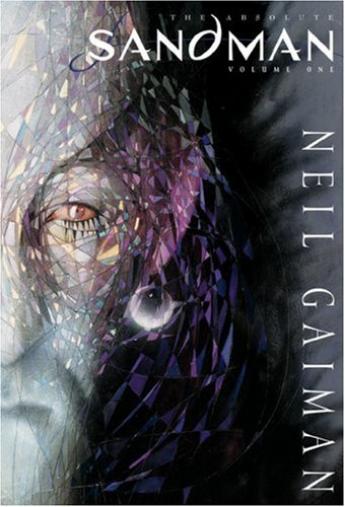Tip
Graphic Novels and The Private Library

By L. D. Mitchell
Book collectors, like any other group of human beings, have their faults. One of the most common is that we too often dismiss out-of-hand any sort of book collecting that does not appeal to us personally.
Your faithful blogger is as prone to this unfortunate tendency as the next book collector. Why anyone would collect paperbacks, for example, is beyond us, given the serious long-term storage problems that such books represent. On the other hand, if we lived in a one-room apartment, collected lurid cover art, or seriously collected genre fiction like romance, science fiction or westerns, we're equally certain that our views on this matter would be quite different. (Besides, we not infrequently encounter books that we really, really want that have never been issued in hardback, so our preference for hardcovers has sometimes had to bow to reality.)
Graphic novels represent one type of book collecting that often is frowned upon by "serious" book collectors. Frequently dismissed as little more than book-length comics, this characterization does graphic novels a great disservice, given the connotations that the term comics has for many book collectors (e.g., "sophomoric," "dumbed-down," "heavily abridged," etc.). Many graphic novels, for example the Pulitzer Prize-winning Maus, are novels first and comics second. Some graphic novels, most notably Lynd Ward's six wordless novels, have no text but are unquestionably novels, the lack of text notwithstanding.
Part of the problem here, it seems, is that the term graphic novel has never had a really precise meaning. While some graphic novels are compilations of previously published individual comics, such as the bestselling Sandman and Watchmen titles and others are merely well-illustrated abridgments or remixes of classic traditional fiction ... others are stand-alone, original works of fiction that often are every bit as thought-provoking as the modern traditional novel.
This latter fact may account for the changing attitudes towards graphic novels that are beginning to manifest themselves in some quarters. Time Magazine, for example, recently included Watchmen among its 100 best English-Language novels since 1923. The New York Times now tracks bestseller graphic novels in three different categories.
The times they are a-changin'. Folks interested in collecting graphic novels may find the titles below especially helpful …
Stephen Weiner, Faster Than a Speeding Bullet: The Rise of the Graphic Novel
Roger Sabin, Comics, Comix and Graphic Novels. A History of Comic Art
L. D. Mitchell (Palmdale, CA) - librarian, author, photographer and book collector – publishes articles on all book-related subjects in his blog The Private Library. This article was posted by L. D. Mitchell in The Private Library on August 19, 2010. It is presented here by permission of the author. Thank you very much.
>>> Introducing The New York Times Graphic Books Best Seller Lists, by George Gene Gustines
>>> Recommended Graphic Novels for Public Libraries, selected and annotated by Steve Raiteri


